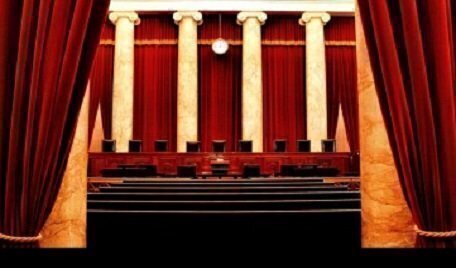Next Monday night, President Donald Trump will announce his nominee to replace Anthony Kennedy as the Supreme Court’s ninth Justice. So why are there nine seats on the Court, and who set that precedent?
 In this area, the Constitution allows for Congress to decide on how many Justices sit on the Supreme Court’s bench. Article III, Section 1, starts with a broad direction to Congress to establish courts. “The judicial Power of the United States, shall be vested in one supreme Court, and in such inferior Courts as the Congress may from time to time ordain and establish,” it reads.
In this area, the Constitution allows for Congress to decide on how many Justices sit on the Supreme Court’s bench. Article III, Section 1, starts with a broad direction to Congress to establish courts. “The judicial Power of the United States, shall be vested in one supreme Court, and in such inferior Courts as the Congress may from time to time ordain and establish,” it reads.
The Judiciary Act of 1789 established the first Supreme Court, with six Justices. “Be it enacted by the Senate and House of Representatives of the United States of America in Congress assembled, That the supreme court of the United States shall consist of a chief justice and five associate justices, any four of whom shall be a quorum, and shall hold annually at the seat of government two sessions, the one commencing the first Monday of February, and the other the first Monday of August,” the act read.
Since 1789, Congress changed the maximum number of Justices on the Court several times. In 1801, President John Adams and a lame-duck Federalist Congress passed the Judiciary Act of 1801, which reduced the Court to five Justices in an attempt to limit incoming President Thomas Jefferson’s appointments to the high bench. Jefferson and his Republicans soon repealed that act, putting the Court back to six Justices. And in 1807, Jefferson and Congress added a seventh Justice when it added a seventh federal court circuit.
In early 1837, President Andrew Jackson was able to add two additional Justices after Congress again expanded the number of federal circuit court districts. Under different circumstances, Congress created a 10th circuit in 1863 during the Civil War, and it briefly had a 10th Supreme Court Justice. However, Congress after the war passed legislation in 1866 to reduce the Court to seven Justices. That only lasted until 1869, when a new Judiciary Act sponsored by Senator Lyman Trumbull set the number back to nine Justices, with six Justices required at a sitting to form a quorum. President Ulysses S. Grant eventually signed that legislation and nominated William Strong and Joseph Bradley to the newly restored seats.
Since then, aside from President Franklin Roosevelt’s ill-fated threat to support an effort to add new Justices (who sympathized with his policies) to the Supreme Court, the number of Justices on the Court has remained stable. In 1937, Roosevelt had won a second term in office, but the makeup of a conservative-leaning Supreme Court hadn’t changed since he took office four years earlier. Roosevelt supported a Judicial Procedures Reform Bill of 1937 to add as many as six new Justices.
The legislation struggled to gain traction, and it was opposed not only by Chief Justice Charles Evans Hughes but also by the liberal Justice Louis Brandeis. Soon, changing voting patterns on the Court along with vacancies made the Court Packing plan a moot point.






